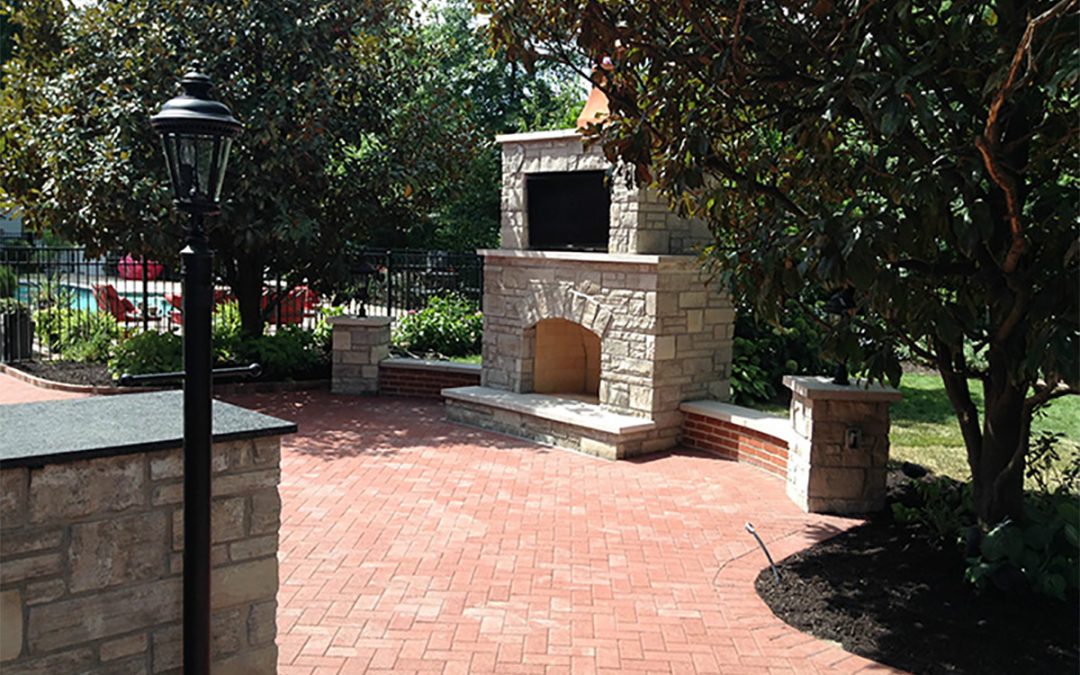
Jan 14, 2021 | custom stonework, hardscape, home appeal, landscape, landscaping, lanscape company, lighting, masonry, outdoors, retaining wall, softscape
Light has always perplexed and inspired humankind from the days of only starlight and campfires to modern electrical marvels. The beauty of light is unparalleled, and before electricity it was quite difficult to sustain lighting in homes or outdoors without a significant risk of fire. However, electricity creates a safe way to make your landscape beautiful in the dark without bringing the heat.
Your landscape is incredibly elegant in the daytime, so why not bring out the suave and glowing beauty of nighttime lighting to your masterfully designed soft and hardscapes? Lighting can turn your nighttime landscape into something from a dream- you may even have dreams about lighting after seeing the results!
Outdoor Lighting
Outdoor lighting is far better for your wallet than it used to be, and far better for the planet too! With waterproof, motion-sensing, solar-powered, and LED options in all styles and colors, there’s no stopping you from achieving the nightscape of your dreams! Installing outdoor lighting doesn’t have to be hard, and there are even options that don’t require wiring or battery changes but rather rely on the sun!
Outdoor lighting lets you stay outside for longer in the Summer and soak in the fresh night air without being drowned in darkness, and while you’re probably not likely to go outside at night much during the winter, you can still appreciate the beauty of your winter landscape and watch the lights dance on the glittering frost and snow of the colder months.
Seasonal Options
When it comes to looking for outdoor lighting for your home, the options are limitless, and the possibilities are only limited to your creativity. This flexibility can come in handy especially if you are a fan of decorating for the holiday season! Many LED lights (the most energy efficient) come in a wide array of colors, and some can even change colors at the push of a button! Holiday decorations have never been so easy!
Come to the Bright Side
Curb appeal is something that many home and business owners are constantly trying to improve. Simply put, curb appeal is how aesthetic your property is at first glance, this is especially important for selling or appraising your home or encouraging customers to visit your business as well as giving you the reputation as the neighbors with the nice house. You can build curb appeal by improving your home and property through a number of ways including landscaping and lighting.
Most homes and businesses do not have much in the way of nighttime curb appeal, but by installing outdoor lighting in a well-planned way, your property can look great at any time of the day making it the talk of the town in the best of ways! You love your property, let that shine by installing outdoor lighting!
Final Thoughts
Outdoor lighting is elegant and beautiful when planned and installed responsibly! The installation of outdoor lighting can show everyone how much you value your property, and this is a very important aspect of building curb appeal! If you need help creating a beautiful landscape or planning energy-efficient and beautiful outdoor lighting, contact Fritz Stonework & Retaining Walls today!
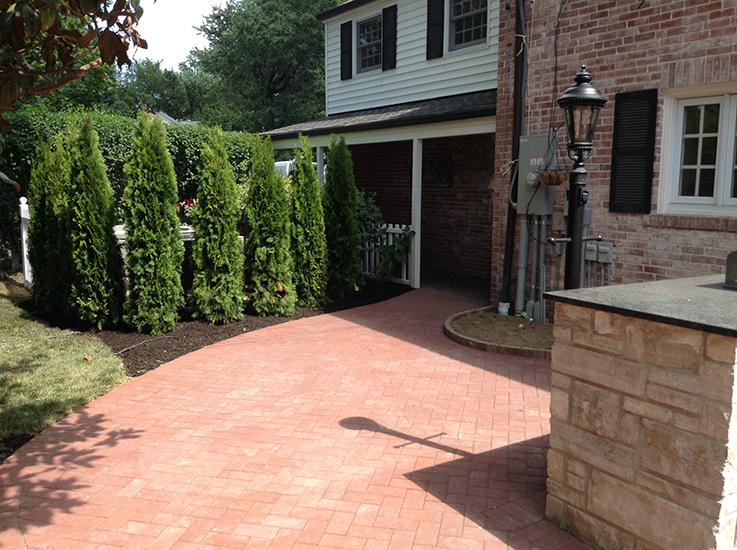
Dec 22, 2020 | custom stonework, hardscape, home appeal, landscape, landscaping, lanscape company, outdoor cleaning, outdoor kitchen, retaining wall, winter kitchen
Whether you enjoy entertaining friends and family during the summer or winter months, or both, having an outdoor kitchen is a great feature to have. It provides a relaxing space to read a book, have conversations with the ones you love, or to just enjoy Mother Nature. However, as winter approaches, you need to make sure your outdoor kitchen is prepared for the colder temperatures. If you do not winterize your outdoor kitchen, expensive repairs might be in your future. The following guidelines will help make sure your outdoor kitchen and appliances will be ready to use when warmer temperatures return.
Take Care of Your Plumbing
Make sure you remove any water that is in the pipes and plumbing system. This can result in major problems, for when it begins to freeze outside, the water can also freeze which can cause the pipes to burst. If the pipes burst, you could end up with huge plumbing bills and flooding, making it unable for you to use your outdoor kitchen.
In order to clear your pipes, you will need to shut off all water supply lines going to the kitchen from the indoor plumbing system. Be sure to shut it off using a valve that is inside your house. This way the water does not rest in outdoor pipes.
When you have shut off the water, start draining the lines. Be sure you do not forget about water supply lines that are connected to refrigerators, ice makers, and sinks. The best way to clear water from lines is by using compressed carbon dioxide.
The last step is to make sure all of the drain valves are left open during winter. This will ensure that water does not remain in the pipes, which will also save you from expensive repairs.
Prepare Your Grill
Even if you plan on using your grill during the winter, it is a good idea to do a deep cleaning to make sure it is in good working condition for the summer. The following steps are a good guideline to follow when cleaning your grill.
- Use a degreaser to get rid of the grease that has built up
- Use a stainless steel polish to polish the grill
- Scrub areas that are still dirty with a metal grill brush
- Remove the grates and clean underneath the grill
- Season the cooking surfaces using vegetable oil to the grates. Heat the grill to 500F for 20 minutes
- If you are not using your grill during the winter, be sure to turn off the gas line
Depending on the quality of your grill and the materials it is made out of, you may not have to use a cover. However, if you do use a cover, make sure you use one that is made for your type of grill that allows moisture to get out.
Cover or Seal if Needed
If you want to prevent wear, cracks, and stains due to cold temperatures and wet weather, then you might want to think about covering your appliances. However, keep in mind that covering surfaces and appliances allows for moisture to get confined under the cover and can cause more damage than if they were not covered. One tip is to call the manufacturer of the appliances to see how to best protect them.
Another way to protect surfaces from wear is to apply sealers and finishers. Make sure you have also taken everything out of cabinets and they are clear of dirt and debris. Use oil on wood cabinets and surfaces and a coat of stainless steel finish on stainless steel appliances. If you have stone countertops, be aware that weather can wear them down over time. You should buy sealers that are made specifically for stone to prevent any damage.
Winterize the Refrigerator and Ice Maker
The first thing you should do is turn the power off to both the refrigerator and ice maker. The water should already be shut off and the water lines running to the machines should be drained. Once you have done these, either unplug the refrigerator and ice maker or turn off their circuits in your home’s electrical panel. Afterwards, clean each one by following these steps:
- Clean out the ice maker’s storage bin and close the drain valve
- Take everything out of the refrigerator and clean it with soap and water
- Remove the front grill of each one and vacuum them out. When done, put the grills back on each one
- Do not cover either one, as this can contribute to a buildup of moisture which can damage the unit
Prepare Your Fire Pit
The first step to get your fire pit ready is to get rid of any debris, ash, and wood that may have gathered in the fire pit during the summer months. If your fire pit is ran by gas, be sure to turn off the supply. You may want to consider covering it with a cover that is weather resistant to keep out snow, leaves, and animals.
By taking the right precautions, you can be sure that your outdoor kitchen will be ready to go when summer comes back around. If you are in the beginning stages of thinking about designing an outdoor kitchen and have questions, please contact Fritz Stonework and Retaining Walls so we can help answer those questions and discuss the many options you can choose from.
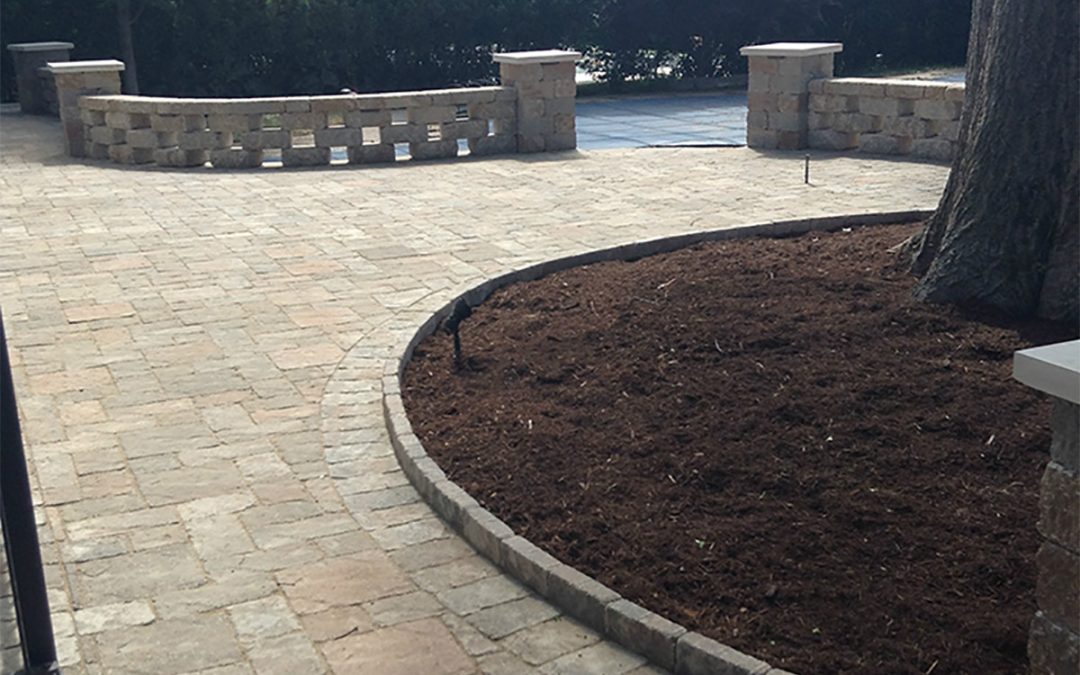
Dec 14, 2020 | custom stonework, hardscape, home appeal, landscape, landscaping, lanscape company, patio pavers, pavers
You may be asking yourself, “What exactly are pavers?” Pavers are a way to add elegance, class, and style to your landscape. They are a natural paving material that is made without using artificial additives. They come in a variety of shapes and colors that have natural characteristics which result in a very aesthetically pleasing sight.
Being able to enjoy your backyard while relaxing in a defined, comfortable space is a priority for many people. It helps relieve stress and tension, it gives you a place to go when you need to take a breather, and it allows you to have some peace and quiet so you can just think about life. There are many ways that you can create this space, such as decks, screened-in porches, and pools. One other way is through patio pavers, which have many benefits for you to consider when deciding how you want to design your outdoor living space.
Benefits
- Pavers decrease the area of your lawn, which means there is less yard maintenance for you to worry about.
- This feature will no doubt add value to your home if you ever decide to sell it. Since pavers are made from a natural clay material from the earth’s surface, they do not lose any of their color or finish, which helps increase the value of your home.
- Patio pavers are commonly known to be one of the most visually pleasing type of outdoor space.
- Pavers come in a variety of stones, colors, sizes, and styles, leaving you with the opportunity to customize your landscape the way you want to. You can choose from a natural slate texture and cobblestone that creates an old-world charm feeling to the classic style of brick.
- It is one of the most durable types of outdoor flooring that will last a long time.
- Pavers are tough and strong, making them resilient to cracking, root growth, frost, erosion, and breaking down from deicing salt.
- If your pavers do become damaged or stained, the necessary repairs are fast, easy, and do not cost a lot. You are able to remove the damaged paver only and replace it the same day. There are no complicated tools required for the replacement and it does not require a huge amount of labor.
- Patio pavers are friendly to the environment because they do not stop the natural flow of water and ground filtering processes. They allow water to drain through and allow the useful bacteria to remove any toxins before they get to any creeks or rivers.
- Pavers create a non-slip, permeable surface which is safer than deck and flooring materials.
- Installation of pavers is fast and can be laid in any type of moderate weather condition. This helps keep the cost, time management, and budgeting issues in check.
- Unlike concrete, you do not have to sit and wait before you can use the pavers. Pavers are ready to use as a driveway or patio as soon as they are set.
Adding pavers can only bring about positive things, including adding beauty to your landscape and joy to you and your family. If you are interested in making pavers a part of your home, give Fritz Stonework and Retaining Walls a call today at (636)-861-1530 so we can help you pick out the style of pavers that best suits your personality.
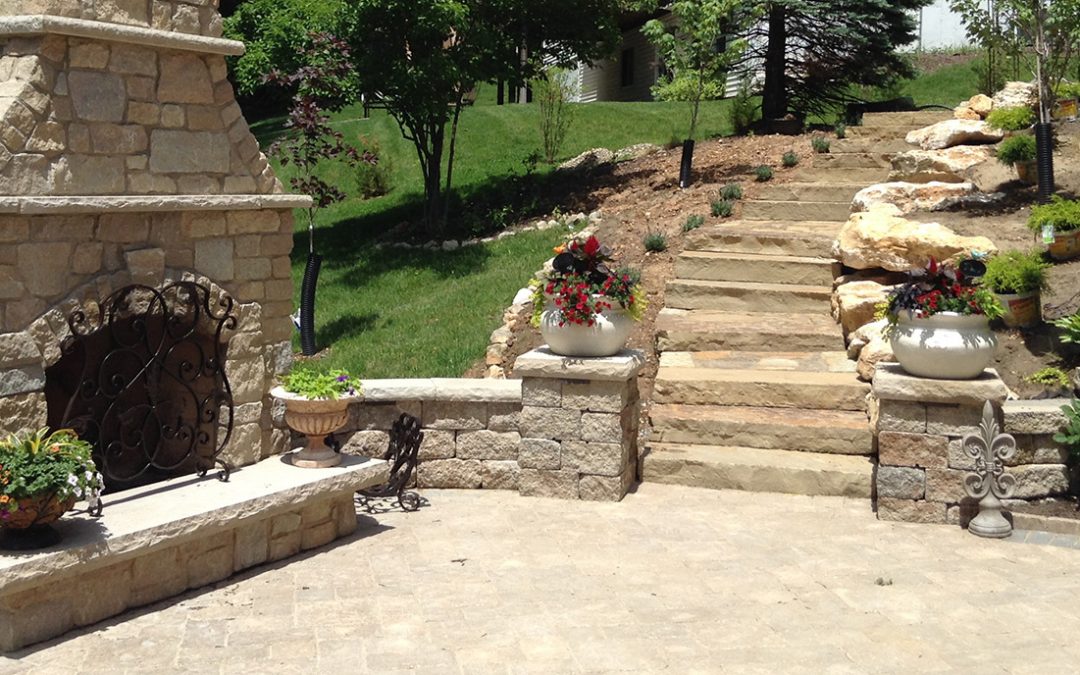
Nov 14, 2020 | custom stonework, fall outdoors, fall patio, fire pit, firepit, hardscape, home appeal, landscape, landscaping, lanscape company, outdoor fireplace
Stonework outdoor spaces have long been held in high esteem for their durability, added value to a home, and, most importantly, the beautiful gathering place it makes for family and friends. During COVID-19, there has been a dramatic rise in home improvements. As people spend more and more time at home, they have seen the need to adapt their homes into more than just a living space. A home can be a destination in itself. A place to entertain family and friends without the need for going to a restaurant or a bar. Stonework such as patios, walkways, and fire pits can give your home that extra touch that makes your family and friends feel as though they are visiting a destination rather than someone’s home.
Why Should I Choose Stonework for My Outdoor Space?
Stonework is long lasting and has a timeless appeal to it. Where wood degrades and styles change, stonework will endure and have lasting appeal long past current trends. Here are four reasons why stonework is the best choice for updating your outdoor living space.
- Low Maintenance: There’s very little maintenance to be done with stonework patios, walkways, and fire pits. If installed correctly, stonework not only last for decades, it will look good for decades. Stonework keeps its appearance throughout the years with basic maintenance that most homeowners can accomplish. Simply keep leaves, twigs, branches, and other organic material from accumulating on your stonework. Keeping organic material from decaying on your stonework prevents any discoloring on the stones and prevents moisture from entering into the mortar.
- Weatherproof: Stonework performs well in any season and looks the same all year. Where wooden deck will expand and contract with the seasons, stonework does not move seasonally. Where ground contact will eventually rot even pressure-treated lumber, stonework will not rot. A stonework patio will also never get blown away in a tornado or in strong winds like a wooden deck can. The weight of stonework, and it being flush into the ground, prevents wind from ever uprooting your investment.
- Design: Stonework comes in a variety of styles and colors. Expert stonework installers can help you decide on a design that fits your home and needs. Merging stonework pathways, patios, and fireplaces can seem like an impossible task to a homeowner, but experienced professionals can help bring your dream backyard alive.
- Adds Value to Your Home: Stonework is one of those few investments that you can make to your home that will age gracefully. The material itself is permanent and the aesthetic of stonework never goes out of style. If you ever decide to sell your home, buyers will pay more for a home that has a stonework outdoor space. Stonework won’t be a liability if you go to sell your home like a decaying and dilapidated wooden deck would be. But the “value” of an outdoor space doesn’t have to be solely in its resale value. If you decide not to sell your home, you still have the value of an outdoor space that you, your friends, and your family can benefit from. You might find yourself spending more time outside enjoying the fresh air and the people important to you.
COVID-19 isn’t stopping others from getting the most out of life at home. In a season where home improvement is on the rise, make your home improvement one that lasts. Choosing stonework for your patio, walkway, or fire pit is an improvement that you won’t come to regret. Choosing trusted professionals in the industry is just as important as making the right choice in your home improvement options. Serving the greater St. Louis region for over 30 years, Fritz Stonework and Retaining Walls is the best choice if you’re considering updating your outdoor space. Call Fritz Stonework at 636-861-1530 or learn more about Fritz Stonework here.
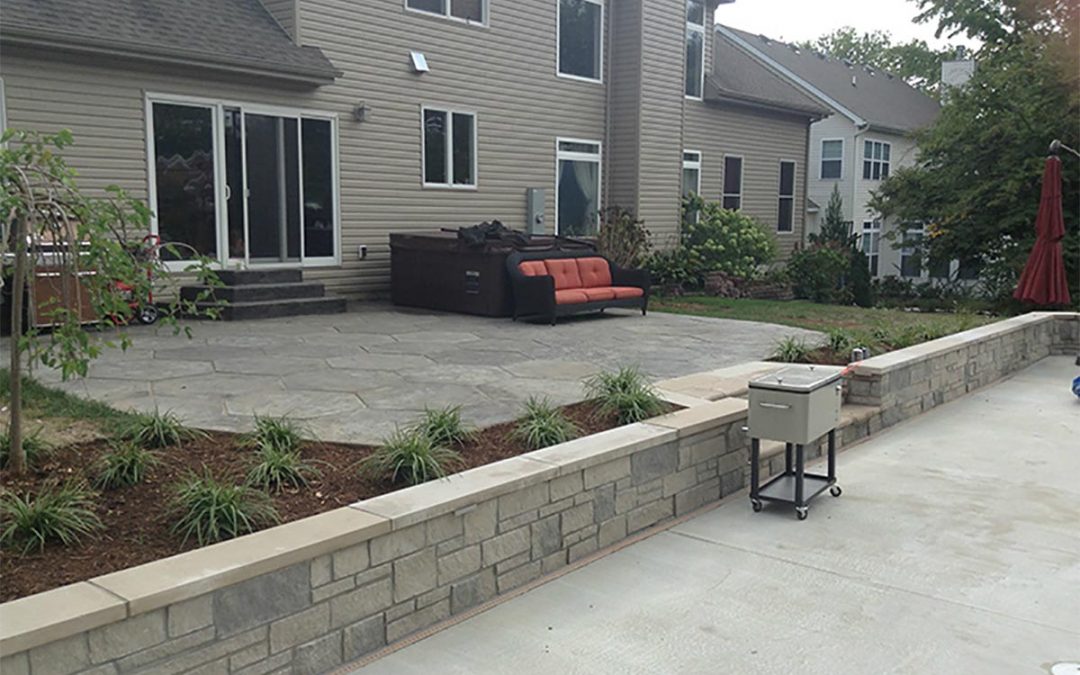
Oct 14, 2020 | fall outdoors, fall patio, fire pit, firepit, fireplace, hardscape, home appeal, landscape, landscaping, lanscape company, masonry, outdoor fireplace, patio
For some people, the fall and winter seasons are a nice welcoming change to the hot summer temperatures. However, what comes along with fall and winter is weather that includes moisture, such as rain and snow. For as long as structures have been in existence, moisture has been the main cause for its deterioration. Moisture in all forms affect how well the building materials function.
The way masonry systems are designed should prevent the intrusion of moisture into the building’s interior. It should also keep the building’s structural components safe. If there is any structural break, then your building could be compromised. Masonry units that are made poorly are among the most common failure points. These include mortar joints, hairline cracks, parapet, and door and window details. Water can also come through by vapor condensation and can enter the structure as a result of poor work. The lack of proper drainage can exacerbate the impact of any type of moisture that makes its way through; therefore, creating major damage to the building.
Structural Problems
When unwelcome moisture seeps through, masonry units and mortar can crack. Thermal expansion can be a result when water gets into brick, concrete, and natural stone. Thermal expansion can cause the surface to peel, pop out, or flake off. This is also known as spalling, which is caused by too much moisture in the masonry that puts pressure outward. Spalling can ultimately result in large sections of the masonry to crumble and fall off, which will lead to structural damage.
Too much moisture cam also result in the wall rotting, which is very unaesthetic and an unhealthy condition. The insulation can also disintegrate along with staining of the interior finishes. Other effects may include the deterioration and/or corrosion of the wood/steel backup studs, cladding, ties and reinforcements. If this is left unattended to, the excess water can cause an increase and spread of additional structural degradation and complete structural failure.
Aesthetic Degradation
When there is excess moisture seeping through the masonry, efflorescence is a main problem. Efflorescence is a white, powdery, crystalline deposit that forms on the surfaces of masonry, stucco, and concrete. Efflorescence is caused when salt within the masonry unit itself has been dissolved due to too much moisture and has made its way to the surface of a porous material. It then forms the white, powdery, crystalline deposit as the water evaporates.
In order for efflorescence to happen, three problems must be present.
- There has to be water-soluble salts somewhere in the wall
- There must be enough moisture in the wall to render the salts into a soluble solution
- There must be a way for the soluble salts to move their way through to the surface so the moisture can evaporate, getting rid of the salts so they can crystallize causing efflorescence
Just because sulfates may be present in a masonry wall, it does not mean efflorescence will occur. The sulfates must be dissolved by water in order for it to happy. If there is no moisture then the sulfates will not find their way to the surface. However, there are certain conditions that will aggravate the possible creation of efflorescence. For example, if a block is exposed to cold, rainy weather during storage or if the structure has been poorly designed in regards to drainage and moisture control, then efflorescence is more likely to occur.
Health and Safety
Too much moisture can cause bacteria to grow which can create new odors or worsen current ones. The effects of growing bacteria can cause existing conditions to become worse, such as asthma and allergies. These bacteria have also been known to cause cancer and birth defects.
Managing moisture is a top priority when designing and building, especially here at Fritz Stonework & Retaining Walls. It is important to us that you and your family are safe from any potential harm. We work hard to make sure your masonry is up-to-par and lasts for many years to come. Contact us to today at (631) 861-1530 so we can help you create your masterpiece.
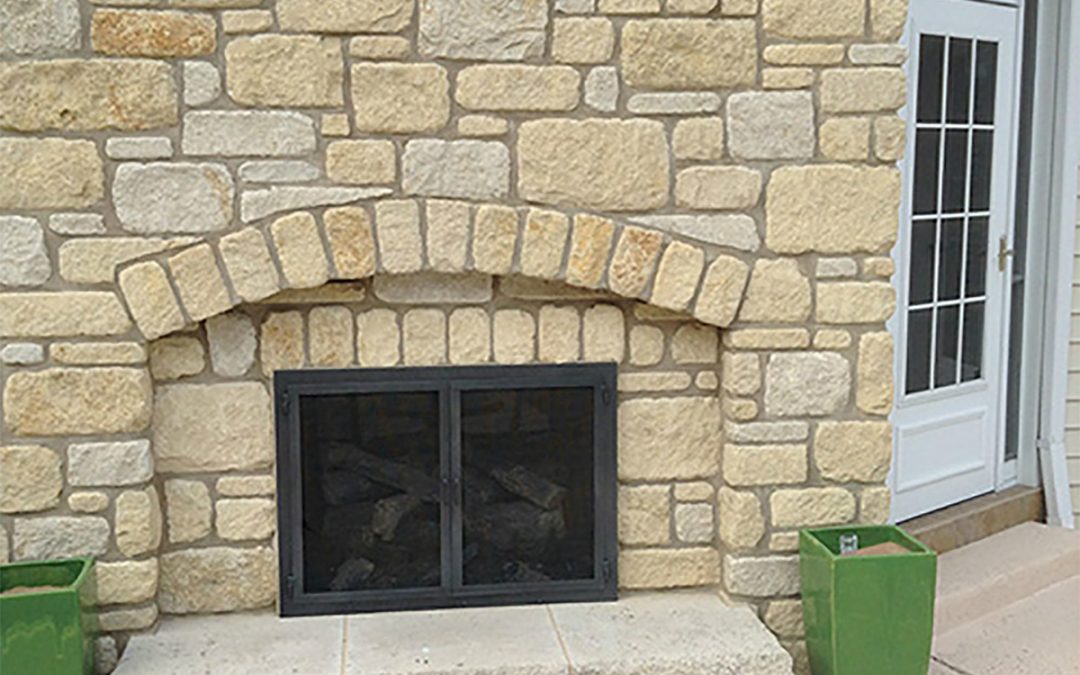
Sep 25, 2020 | hardscape, home appeal, lanscape company, masonry, mortar, motar
Have you ever asked yourself what exactly is stone masonry and if it is something you would want to add to your outdoor living space? Stone masonry is described as the shaping of rough pieces of rock into accurate geometrical shapes and then arranging the results together using mortar to form structures. This technique dates back thousands of years and uses basic tools such as a metal straight edge, mallet, and chisels.
There are a variety of different techniques that are used in stone masonry. These techniques have advanced along with changes in the way people live and the modernization in construction.
Traditional Dry-Stack
With the dry-stack technique, walls are layered up with stone without mortar joints. Gravity is what holds everything together. Dry-stacking involves little expense except for the labor. The standing stone wall is usually made large at the bottom and becomes thinner as it gets higher.
Advantages
– Attractive, strong, and can last hundreds of years
– Shows traditional character
– Environment-friendly
– Can be re-used multiple times
– Unlike a brick wall, the life of the stone structure is long-lasting
Disadvantages
– The cost of labor is high and the construction is slow and costly
– An improper structure can lead to the collapse of the property
– Not a good fit for high walls or buildings
Traditional Mortared Stone Technique
In this technique, the foundation of the wall must be solid so the joints do not crack easily. To make sure the joints do not crack easily, a paste made of lime and water is used which helps bond the materials together.
Advantages
– Concrete block is more resistant to weather, pest, molds, and fire
– Materials for concrete blocks is locally available
– Concrete blocks are good insulation against heat, sound, and moisture
Disadvantages
– Due to their weight, concrete blocks are hard to handle and involve more workforce
– A large quantity of steel is needed to reinforce cement concrete structures
– The issues of plumbing in concrete masonry structures are difficult to solve
Modern Veneered Stone Technique
Most stonework these days consists of a non-structural veneer stone against a structural wall of the concrete block. Concrete mortar includes Portland cement mixed with sand, gravel, and water. When using the veneered stone technique, the large particles of gravel are interlocked like little finger to make the concrete long-lasting.
Advantages
– Less expensive
– Longer life when installed correctly
– Provides natural beauty on the exterior of your home
– Perfect for walls that do not need extra support
– Lightweight
– Come in larger panels which allows for easier installation in a shorter amount of time
– Low maintenance
– Can be used on different surfaces such as stone, metal, and wood
Disadvantages
– Allows moisture to come through the joints which can cause mold issues
– Incorrect installation could lead to breaking and chipping
– Abrasive cleaning material can damage the surface
Slipform Stone Technique
This technique is known as a cross between the traditional mortar stone wall and a veneer stone wall. Natural stones are used and placed inside the forms with the presentable side faces against the formwork. The concrete is then poured behind the rocks.
Advantages
– Decreases the use of building cranes
– There is less use of accessories such as scaffolding, support bars, and platforms
Disadvantages
– Involves high costs in the beginning stages
– Highly skilled experts and hi-tech equipment are needed
Framed-One Side Stone Technique
Framed-one sided stonemasonry is more obvious on building with stone on the outside and the framed wall on the inside. Half the formwork is done when the interior frame is built first. This type of stonework is a traditional way of masonry and creates strong, beautiful walls that are built with the strength of the stone, reinforcement of concrete and steel.
Advantages
– Less time taken in the construction than with other techniques
– Comparatively lesser costs involved in workforce and materials
– Strong and good-looking walls that are built with masonry stones
Disadvantages
– Causes lateral deflections
– The span length is much less
Tilt-Up Stone Technique
This technique is done by pouring stone walls flat on the ground and then setting them in place using a crane. Stone, sand, gravel, and rock materials are used for the tilt-up stone technique.
Advantages
– More economic than cast-in walls mason stones
– Hazards are much less
– Faster and safer installation
Disadvantages
– Can’t be used for complex building wall
– Lack of versatility
There are all types of techniques that can be used in stone masonry. Choosing the right technique for your needs may be overwhelming and confusing. Contact us at Fritz Stonework and Retaining Walls today so we can help you create a masterpiece that you will enjoy for years to come.






